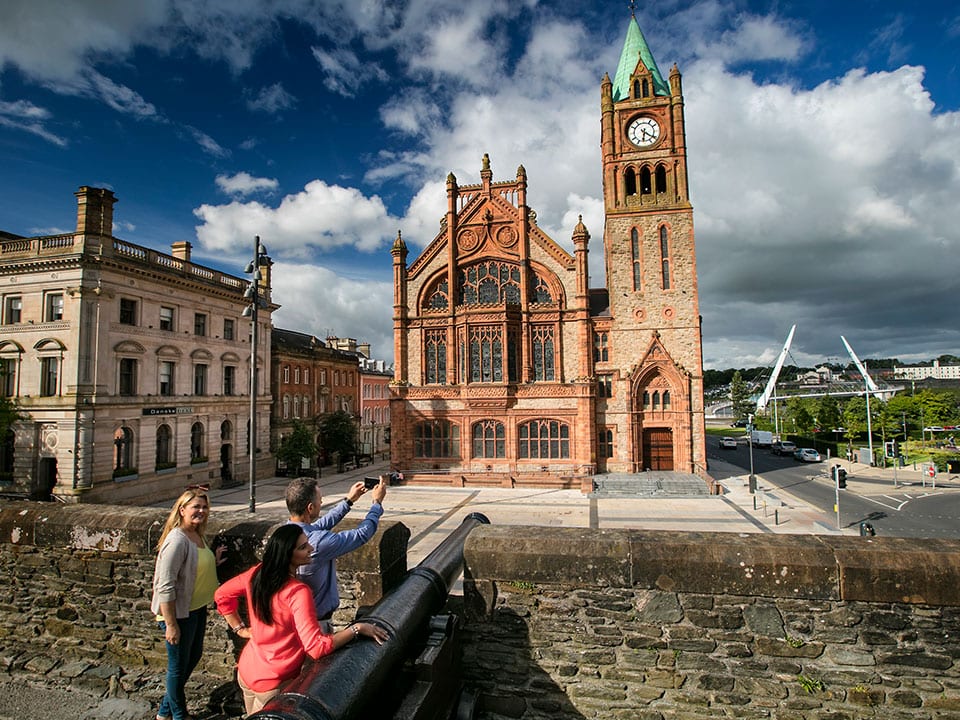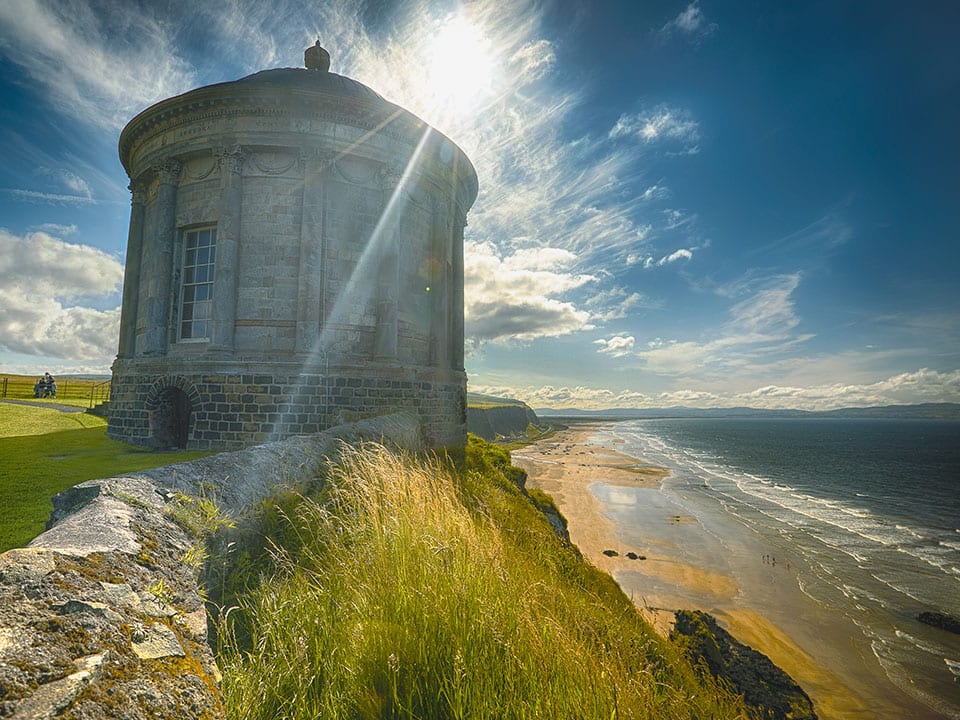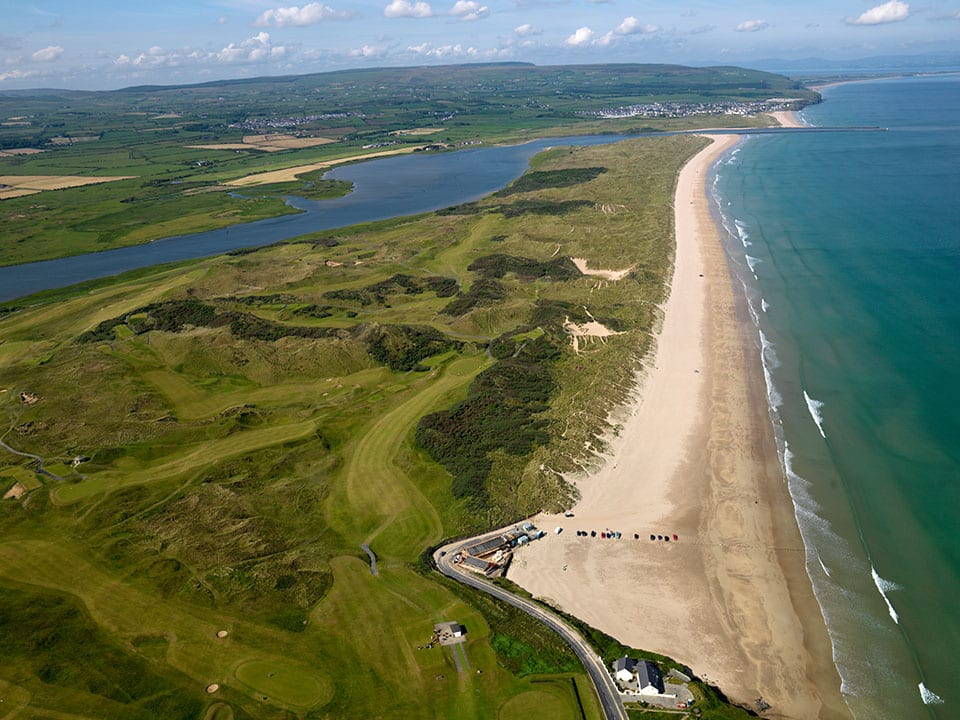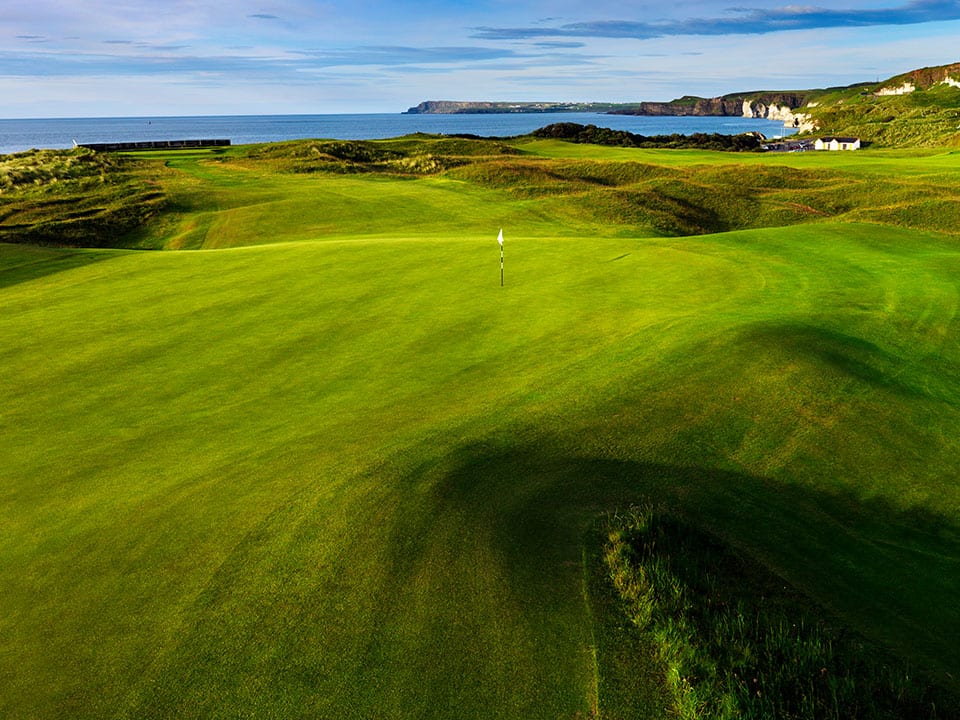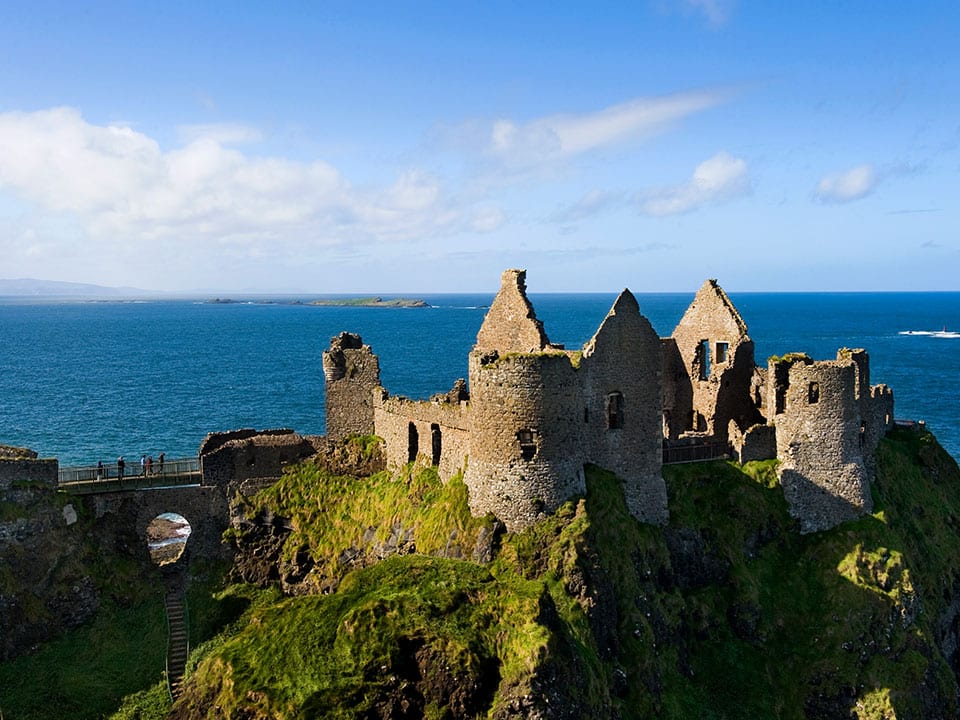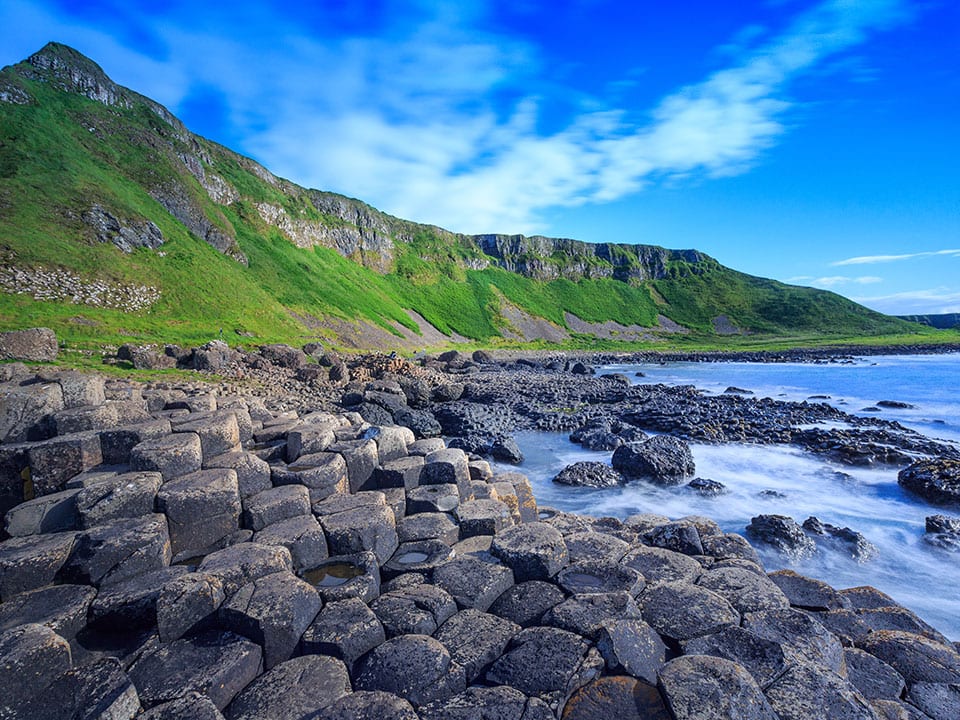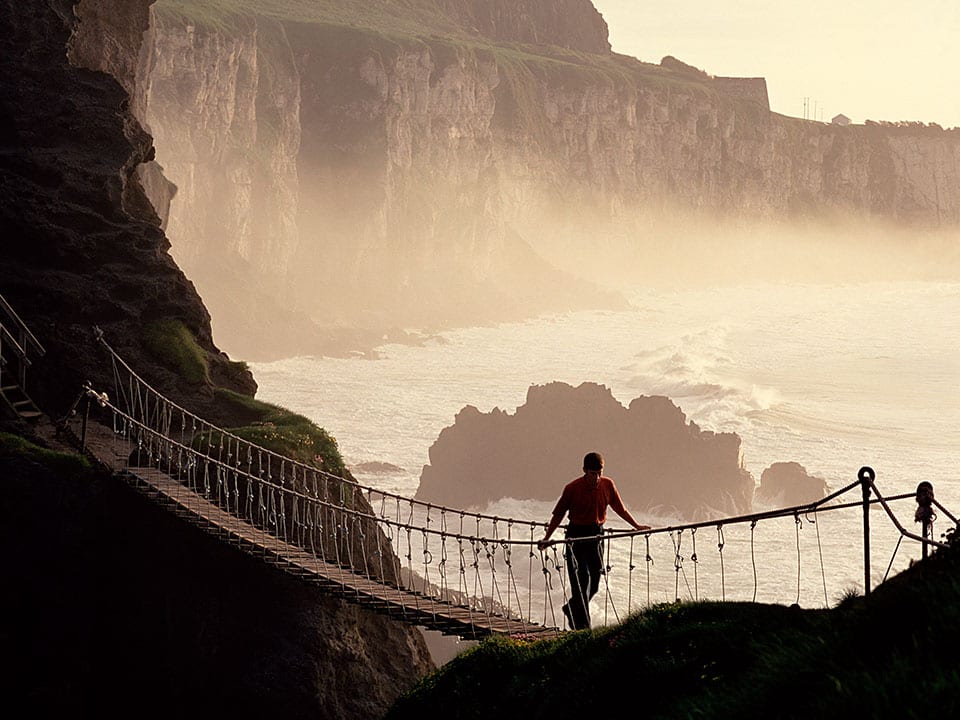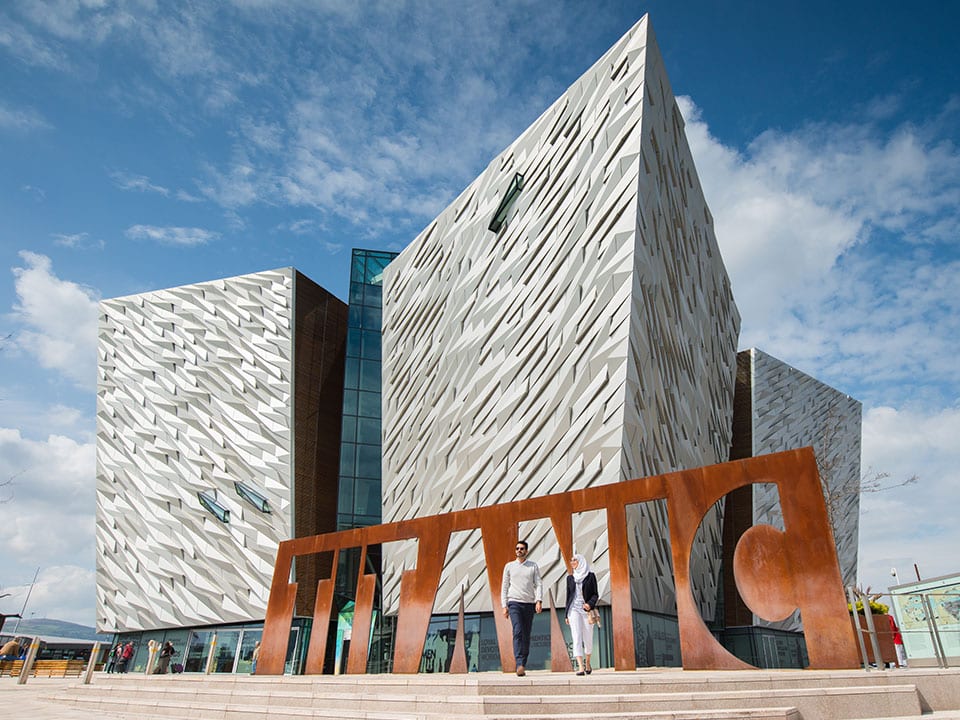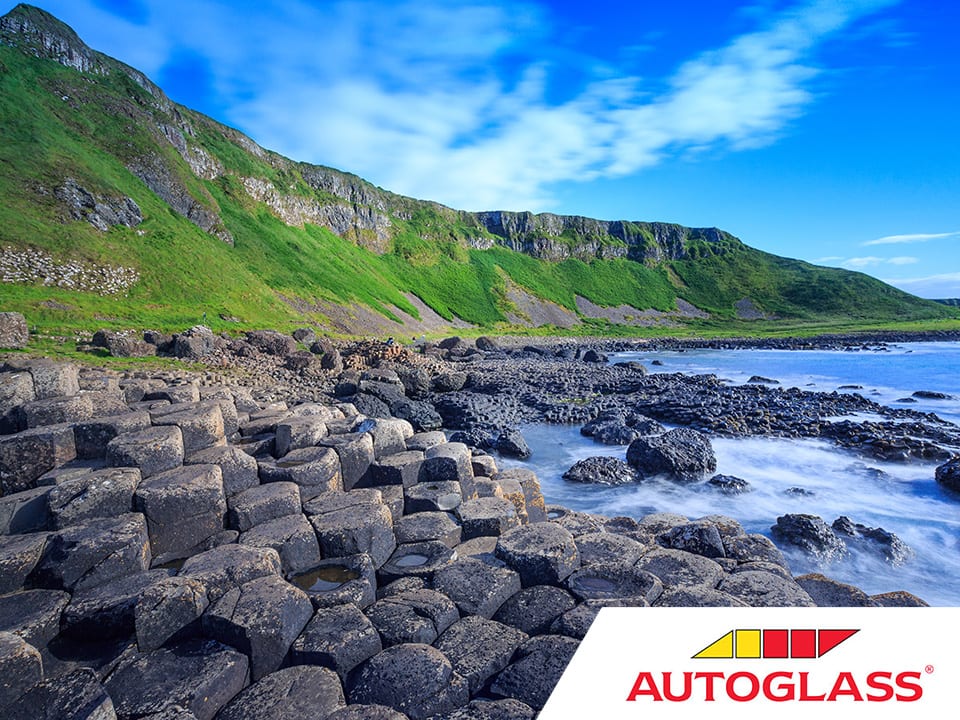
Ireland Scenic Drives: Derry to Belfast
Sometimes, to experience the best of what Ireland has to offer, you need to get behind the wheel and explore the country for yourself. This very special series of blog posts is here to showcase some of the finest road trips that Ireland has to offer.
This week, we’re exploring some of the striking vistas and fascinating historical landmarks that line the coast of Northern Ireland. We’re setting off from Derry and heading for Belfast, with plenty of exciting and unusual stops along the way. So, it’s time to buckle up, put the rubber to the road, and give yourself over to a Northern Irish roadtrip that you won’t soon forget.
Derry Tower Museum
We’re kicking things off in the beautiful city of Derry. Steeped in fascinating history, there’s a lot to see around this thriving, cosmopolitan city centre – not least of all, the Tower Museum and Guild Hall. Both museums are monumental landmarks and centrally located. The Tower Museum hosts a revolving array of seasonal exhibitions, alongside a handful of particularly noteworthy permanent displays. Exhibitions at the museum include the Story of Derry and a salvaged shipwreck that was once part of the Spanish Armada – La Trinidad Valencera. The museum also boasts the only open air viewing facility in the heart of the city centre with stunning panoramic views of the city and River Foyle.
Guildhall
One of the best known landmarks in the city, the Guildhall museum has a rich history all of its own. Over its 120 year history the Guildhall has been destroyed twice – by fire in 1908 and through bomb attacks in 1972. As it stands today, Guildhall features a selection of significant historical features. The 23 masterfully constructed stained glass windows that line the main hall tell the story of the city through the ages. The Guildhall’s Clock was designed as a replica of ‘Big Ben’ and was, at the time of construction, the largest of its kind in Ireland. The Hall also showcases a time capsule buried under the building when the foundation stone was laid in 1887, the capsule’s contents are currently on display on the first floor of the hall.
The Guildhall, Derry City (© Tourism Ireland)
Having taken in some of the sights and sounds that Derry has to offer, we’re setting off to begin our journey in earnest. Leave Derry on the A2 and set your sights to the east and the Mussenden Temple – it’s the first stop on our Northern Irish journey.
Derry City → A2 → Mussenden Temple
Mussenden Temple
Mussenden Temple is located in the beautiful surroundings of Downhill Demesne near Castlerock, just off the aforementioned A2. The temple perches dramatically on a 120 ft cliff top, high above the Atlantic Ocean and offers spectacular views westwards over Downhill Strand towards County Donegal and to the east Castlerock beach towards Portstewart, Portrush and Fair Head.
The temple was originally built in 1785 as a summer library and the design was modelled after the Temple of Vesta at Tivoli, just outside Rome. Both the Temple itself and the gorgeous views that surround it are among the most photographed scenes in Northern Ireland. Over the years, the Temple itself was in danger of being lost to the sea due to substantial erosion of the cliff that it calls home. In 1997 the National Trust carried out cliff stabilisation work to avoid any major damage to the building. This unique national treasure is a must-see for those exploring this part of the country. Aside from the temple itself, the dramatic setting also boasts a selection of cliff top walks that allow you to enjoy the breathtaking views over Ireland’s northern coast.
Mussenden Temple, Co. Derry (copyright @storytravelers)
From here, we’re carrying on up the coast toward Portstewart. For this portion of the journey, we’re sticking on the trusty A2.
Mussenden Temple → A2 → Portstewart
Portstewart
Our next stop is the charming seaside town of Portstewart, there is no shortage of things to see and do in this coastal gem. The town’s harbour and scenic coastal paths form an Atlantic promenade that lead up to 2 flawless miles of golden strand. Portstewart is probably best known for this sandy beach, which is particularly popular within the surfing community. Aside from the scope of its natural beauty, Portstewart also has a couple of points of historical interest, including Saint Patrick’s Well at the head of the strand. The eastern end of the Promenade also has a small harbour which has recently undergone refurbishment.
Portstewart’s Dominican convent – an imposing, gothic building, sits atop the cliff that dominates the western end of the Promenade. The site, formerly known as “O’Hara’s Castle”, was built in 1834 and purchased by members of the Dominican order in 1917 for the purpose of being a centre of education in the north west of Ireland.
Portstewart Strand, Co. Derry (copyright Fáilte Ireland Tourism Ireland)
If you feel like ditching the car for a portion of your journey; To the east of Portstewart is a popular walking/cycling path along the coast to Portrush, leading to the Giants Causeway, Carrick-a-Rede Rope Bridge and the Old Bushmills Distillery (the oldest licensed distillery in the world). Otherwise, it’s time to hop in the car and head for Portrush. We’re sticking to the old, reliable A2 and heading east.
Portstewart → A2 → Portrush
Portrush
Our next stop, Portrush, is one of the jewels of the North and perhaps one of the finer locations to stop for the evening. With a slew of wonderful hotels and quaint B&Bs to choose from; you won’t be stuck for a spot to lay a weary head. The main part of the old town, including the railway station and many of the hotels, restaurants and bars, is built on a mile–long peninsula – Ramore Head – making for some stunning coastal views.
The town is perhaps best known for its trio of sandy beaches, the West Strand, East Strand and White Rocks. A 13 ft high bronze sculpture, inspired by the sails of local traditional boats – ‘To the People of the Sea’ by Cork-based sculptor Holger Lönze – is located at East Strand. For all you golf fans, Portrush is also home to The Royal Portrush Golf Club, the only golf club outside mainland Great Britain which has hosted the Open Championship.
Royal Portrush Golf Club, Co. Antrim (copyright Fáilte Ireland Tourism Ireland)
Looking for a little something to keep the kids busy? Portrush is also home to Barry’s Amusements, the largest amusement park in Northern Ireland. And for those interested in local flora and fauna,The Skerries – a collection of rocks located just off the coast – are an important habitat for several species, some unique to Northern Ireland.
Refreshed and revitalised, we’re getting back onto the A2 and continuing on our journey. Next stop, Dunluce Castle!
Portrush → A2 → Dunluce Castle
Dunluce Castle
Our next stop – The iconic ruin of Dunluce Castle – has a long and tumultuous history. First built on it’s dramatic cliffside location by the MacQuillan family around 1500, the earliest written record of the castle can be found in a text dating back to 1513.
A tactically significant fortification, Dunluce was seized by the ambitious MacDonnell clan in the 1550’s, who set about stamping their mark on the castle under the leadership of the famous warrior chieftain Sorely Boy MacDonnell.
In the 17th century Dunluce was the seat of the earls of County Antrim and saw the establishment of a small town in 1608. Visitors can explore the findings of archaeological digs within the cobbled streets and stone merchants’ houses of the long-abandoned Dunluce Town. Some might recognise the castle as the film location of the Game of Thrones’ Seat of House Greyjoy, the great castle of Pyke.
Dunluce Castle, Co. Antrim (copyright Fáilte Ireland Tourism Ireland)
Dunluce Castle → A2 → Giant’s Causeway
Giant’s Causeway
For centuries, travellers to this region have marvelled at the majesty of the Giant’s Causeway. At the heart of one of Europe’s most magnificent coastlines, its unique rock formations have, for millions of years, stood as a natural rampart jutting out into the Atlantic. To stroll on the Giant’s Causeway is truly a unique experience.
In 1986 the Giant’s Causeway Visitor centre opened, coinciding with the World Heritage Conventions addition of the Causeway, to its coveted list of sites considered of exceptional interest and universal value.
The facilities at the Causeway Centre now include Tourist Information offices, an Interpretive Audio-Visual Presentation and a Souvenir Shop and Tea Rooms. This modern and fun centre caters to half a million tourists each year.
The Giant’s Causeway, Co. Antrim
From here, we’re moving on to another one of the North’s most famous attractions. Exit the Causeway park via the Causeway Road. Follow the Causeway Road until you reach Whitepark Road. Turn on to White Park and follow the signposts – you’re on your way to Carrick-A-Rede Rope Bridge.
Giant’s Causeway → Causeway Road → Whitepark Road → Carrick-A-Rede Rope Bridge
Carrick-A-Rede Rope Bridge
One of the jewels in the crown of Northern Irish tourism, Carrick-A-Rede Rope Bridge is one of the most recognisable locations in the country, playing host to 250,000 tourists each year. Suspended almost 100 ft (30 m) above sea level, the Carrick-a-Rede Rope Bridge was first erected by salmon fishermen over 200 years ago. Crossing the bridge is a thrilling experience and those brave enough to conquer the bridge will be rewarded with stunning views.
Carrick-a-Rede, is from the Scottish Gaelic ‘Carraig-a-Rade’ meaning “The Rock in the Road” – an obstacle for the migrating salmon as they searched for the river in which they were born. Atlantic salmon has been fished at Carrick-a-Rede and Larrybane since 1620. But it was not until 1755 that the first rope bridge between the mainland and Carrick-a-Rede Island was erected to reduce reliance on boats to reach the island.
Carrick-A-Rede Rope Bridge, Co. Antrim (copyright Fáilte Ireland Tourism Ireland)
After taking in all that the bridge has to offer, we’re moving on to the final stage of our Northern road trip and setting our sights on Belfast.
Carrick-A-Rede Rope Bridge → M2 → Titantic Belfast
Titanic Belfast
Situated in the heart of the thriving cultural city that is Belfast, the Titanic Belfast Experience extends over nine interactive galleries. These remarkable exhibitions draw together an array of disparate strands, including special effects, full-scale reconstructions and innovative interactive features. Explore the shipyard, travel to the depths of the ocean, embrace the legend and uncover the real truths behind the Titanic, in the city where it all began.
Some of the Titanic artefacts and curios on site include; promotional brochures for the the Titanic’s ill-fated voyage, Tableware and china salvaged from the ship’s wreckage and the last lunch menu that first-class passengers enjoyed on the day the ship struck an iceberg.
One of the most impressive Titanic artefacts on display and considered by many to be the “Holy Grail of Titanic memorabilia” is the 33-foot wide (10m 05cm) Indian ink and colour washed plan of the entirety of the ship. This must see item is, in fact, the most expensive Titanic artefact ever sold at auction.
Titanic Belfast Experience, Belfast City (copyright Fáilte Ireland Tourism Ireland)
And this is where we bring our Northern Irish roadtrip to an end. We’ve seen two thriving, cosmopolitan cities, charming coastal towns and unparalleled natural beauty. Be sure to check back with the Autoglass® blog soon, we’ll have more guides, tips and explainers coming your way soon.
Book an appointment now
For a quick and easy way to make an appointment book online now.

